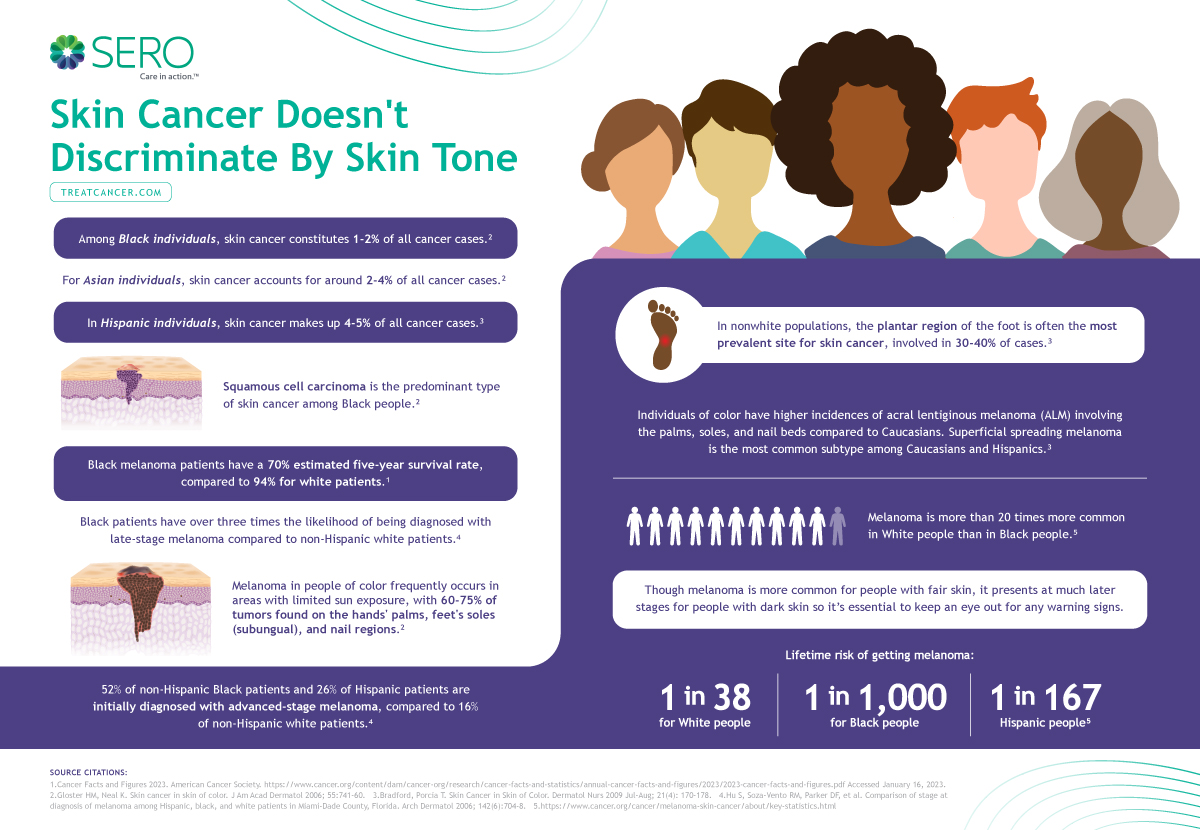Each year, more than 5 million Americans are diagnosed with skin cancer1. Though many of these individuals are White, skin cancer does not discriminate by skin tone. Anyone can develop skin cancer, regardless of race or ethnicity.
To learn more about your risk of developing skin cancer, continue reading and download our free Skin Cancer eBook.Understanding skin cancer rates by race and ethnicity is crucial for proper awareness and prevention. While certain groups face higher risks, everyone should be vigilant about skin protection and regular screenings.



